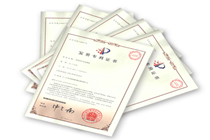In today's world of rapid technological advancement, wireless kinetic switches play a vital role in modern electronic devices and systems. This switching technology is not only widely used in electronics, but also plays a key role in industrial, automotive, and communications applications. This paper will look at the progress made by manufacturers of kinetic energy switches in terms of technological innovation and development, as well as their important contribution to moving the industry as a whole forward.

1. Basic principles of kinetic energy switches
First, let us understand the basic principle of kinetic energy switch. A kinetic energy switch is a physical motion-based switching technology that utilizes energy in motion to control the connection and disconnection of a circuit. Its core components typically include springs, contacts, and a motion mechanism. When an external force is applied to the switch, the spring stores energy, which is then transferred to the contacts through the motion mechanism when released, completing the connection or disconnection of the circuit.
2. Technological Innovation Drives Industry Progress
As electronic devices continue to become smarter and more complex, manufacturers of kinetic switches are constantly striving to meet the growing market demand through technological innovation. On one hand, manufacturers are committed to improving the sensitivity and accuracy of kinetic switches to ensure their reliability in high-performance electronic devices. On the other hand, they also continue to innovate in terms of reducing switch size, lowering power consumption, and improving durability.
For example, some manufacturers have adopted micromotor technology, which allows kinetic energy switches to control the state of a circuit more precisely. This trend toward miniaturization allows kinetic switches to be integrated into smaller devices, such as smartwatches and headphones, thus expanding their range of applications.
3. Meeting the challenges of high temperature and high frequency
In some special application scenarios, kinetic energy switches need to cope with the challenges of high temperature and high frequency. For example, in automotive electronic systems, kinetic switches may be affected by high engine temperatures and electromagnetic interference. To cope with these challenges, manufacturers are constantly improving materials and designs to ensure that kinetic switches can work stably and reliably in harsh environments.
4. Sustainability concerns
In addition to technological innovation, manufacturers of kinetic energy switches are also focusing on sustainable development. As society's focus on sustainability and environmental protection continues to grow, manufacturers are beginning to develop greener materials and adopt more energy-efficient production processes. They are also taking into account the recyclability and recycling of their products at the design stage to minimize the negative impact on the environment.
5 Future Outlook
Manufacturers of kinetic energy switches are faced with changing market demands and technological challenges but are also presented with great opportunities. With the rapid development of the Internet of Things, artificial intelligence, and electrification, kinetic energy switches will play a key role in many more areas. Manufacturers will continue to innovate in materials, design, and production processes to meet emerging market demand for higher performance and more reliable switching technology.
Overall, technological innovation and development by manufacturers of kinetic energy switches are driving progress across the industry. By continually improving performance, adapting to specific environments, and focusing on sustainability, they are providing more reliable and smarter control solutions for modern electronic devices and systems. In the future, as technology continues to evolve, kinetic energy switch manufacturers will continue to lead the industry's development trend, bringing more convenience and innovation to our lives.

 CN
CN








 Home
Home DFM
DFM  Jan 13,2024
Jan 13,2024 
 How does wireless control ensure security and stability?
How does wireless control ensure security and stability? 
 Jan 10,2024
Jan 10,2024 













